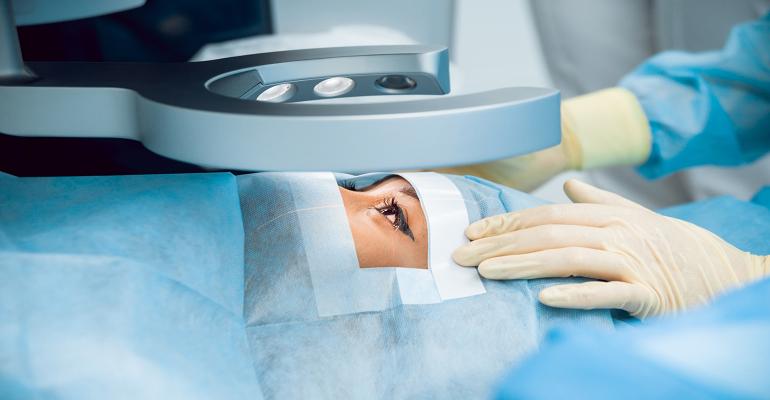Cataract, an opacification of the eye lens, which leads to a decrease in vision quality, is the leading cause of blindness in the world. Cataracts affect roughly 25 per cent of the population living in the MENA region.
Fortunately, cataracts can be treated through a simple yet highly effective surgery that has become extremely common and successfully performed worldwide. Ophthalmologists around the world have performed this technique since the early 1990s, as it has proven successful for millions of patients.
A tailored approach to cataract surgery
According to Dr Luisa Sastre, who is a specialist ophthalmologist in medical retina and cataract surgery at Moorfields Eye Hospital Dubai, the “gold standard” technique for cataract extraction is still small incision phacoemulsification, which involves the use of ultrasound energy to dissolve and extract the cataract. However, recent advancements in cataract surgery such as, Femtosecond Laser-assisted cataract surgery and Extended Depth of Focus lenses (EDOF lenses) are proving to be beneficial alternatives for patients who require a more tailored approach.
“Femtosecond Laser-assisted cataract surgery has been used to perform certain parts of the cataract surgery (e.g., incisions, capsulotomy and softening the nucleus) offering a smoother removal,” Sastre explains. “This procedure can provide a greater level of precision for patients that are in need or willing to correct their astigmatism at the time of cataract surgery and can improve patient outcomes for those that will have intraocular lenses correcting near and distant vision.”
“Additionally, the procedure can be safer for patients suffering from certain medical conditions including Fuchs corneal dystrophy, subluxed crystaline lens, and mature/advanced cataract,” she adds.
In spite of these benefits, Femtosecond Laser-assisted cataract surgery remains a secondary method for cataracts extraction because of its limited availability through standard insurance and the perceived amount of improvement it yields in comparison to similar more cost-effective procedures.
According to Sastre, Extended Depth of Focus lenses is a relatively new development to correct both near and distance vision when performing cataract surgery, with the aim of minimising the dependence on reading glasses after surgery.
Classically, monofocal lenses are implanted during cataract surgery to correct distant vision impairments and so the patient will rely on reading glasses after their surgery. Multifocal lenses, a solution to correct both near and far vision, have gained widespread popularity in the last decade.
Patient outcomes
However, Sastre highlights that monofocal lenses can have some downsides like the fact that few patients may notice halos or glare around lights at night. EDOF lenses, an alternative that eliminates some of the downsides of both monofocal and multifocal lenses, have a unique design that creates a single elongated focal point to enhance the range of vision or depth of focus for patients.
“Several studies have found that EDOF lenses performed similarly to monofocal and multifocal lenses when correcting distance vision, (e.g., driving, watching TV, and walking around) and showed a trend toward superior correction of intermediate vision (e.g. reading on a computer),” Sastre says. “On the other hand, multifocal lenses have trended toward giving better outcomes for near vision (e.g., reading a book, reading on a mobile phone, reading ingredients on an tag from an item in supermarket).
“When patients are appropriately selected, both multifocal and EDOF lenses are related to very high levels of patient satisfaction,” she adds.


